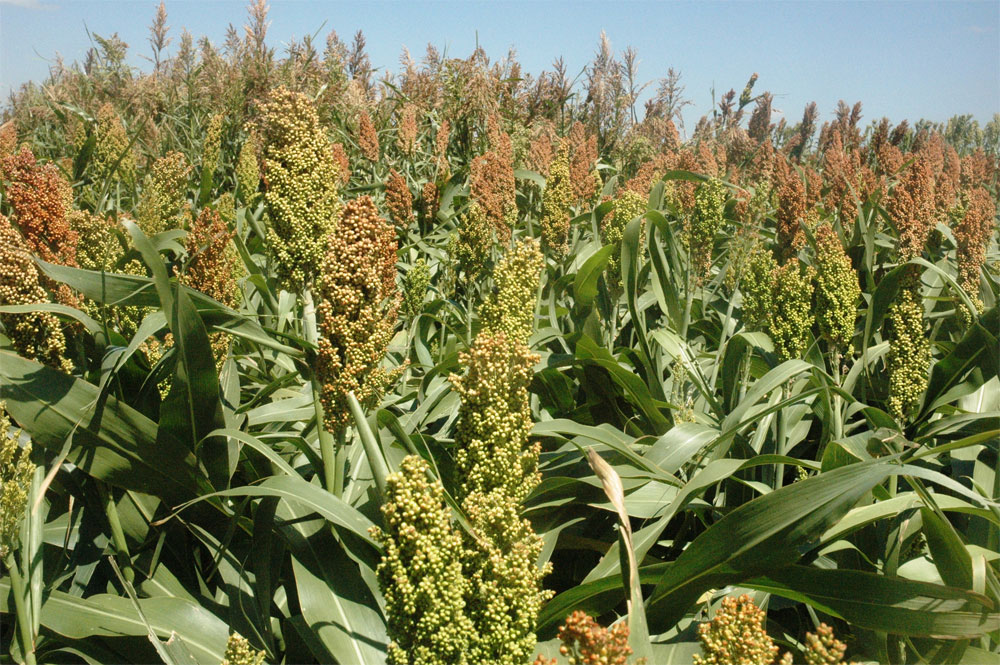In the often arid stretches of cropland in South Texas, rainfall is regarded as something heaven-sent.
Unless it comes thundering down at the wrong time.
“Most of the grain sorghum, especially if it’s on time, is harvested in June or early July and the late stuff is harvested in July and a little bit into August, the late stuff,” said Webb Wallace, executive director of the Cotton and Grain Producers of the Lower Rio Grande Valley. “The early stuff was hurt quite a bit by all the rain we had in July.
“A little bit of moisture doesn’t hurt if it’s a quick rain and the sun comes back out,” Wallace added. “It’s the extended rainfall and heavy rain, several days of wet weather, causes sprouting in the head and seeds fall on the ground, just lower quality.”
China market
Grain sorghum has always been a valued rotational crop to rest cotton acreage and ensure cotton yields in seasons to come. It also is a drought-tolerant crop which can be grown on dryland acreage where a grower doesn’t have access to irrigation or doesn’t want to pay the cost of it.
Growers who were resting cotton acreage by rotating grain sorghum were happy just to break even come harvest time.
But since the Phase 1 trade agreement between the United States and China, passed nearly two years ago, the price for the red-seeded row crop has strengthened significantly.
Last year China imported nearly $2 billion worth of agricultural goods from Texas, and this year looks like it will buy even more, driving up the price of grain sorghum.
In the first half of this year alone, China already had purchased nearly $700 million worth of Texas grain sorghum, the U.S. Department of Agriculture reports.
“When China started importing sorghum, it really helped our sorghum market here,” said Jeff Nunley, executive director of the South Texas Cotton and Grain Association which serves the Coastal Bend area. “We’re the first to harvest and the price usually at harvest is pretty decent. We’ve got grain available and China’s buying and they’ve got boats at the port.”
Pigs, poultry, liquor
The Chinese primarily use grain sorghum as livestock feed, raising chickens, ducks and pigs.
“Poultry, and they really like to feed it to pigs for pork, because that sorghum has to do with the color of the meat and the color of the fat in the meat,” Nunley said. “Whatever color it is, it’s attractive to their consumers over there. So sorghum is good for that.
“Also, and I don’t know how big a market it is, it may be a limited market, but they have kind of a national drink called baijiu or something like that, an alcoholic drink they use sorghum to make,” he added. “I don’t know what that is, if it’s like white lightning or what. When we were going through some of that trade dispute back in ’18 and ’19, we’re like ‘Well, China still has to have sorghum because they’ve got to make that baijiu, you know.’”
It may not be as strong as white lightning’s 190 proof, but it certainly qualifies as firewater. The clear baijiu extracted from fermented sorghum comes in at anywhere between 70 proof and 120 proof.

Damage control
Nunley said grain sorghum is a pretty important crop for South Texas, where it grows well.
This year Archer Daniels Midland was initially buying grain sorghum at the Port of Corpus Christi at up to 10 percent damage due to moldy heads and sprouting. Then they cut it to 5 percent, Nunley said, noting it was unusual to have such a high percentage of the crop damaged.
“Some of it was harvested and put in storage,” he said. “They were at a discounted price and either the elevator bought it at a discounted price, where they reduced the price pretty significantly, or the grower may be still holding that grain hoping that as the harvest in the High Plains of Texas, when they start harvesting grain up there, that grain will ship to Corpus on rail and they may start using clean grain to blend the stuff that’s damaged so that they can move that grain.
“It’s a common practice to blend grain like that if you’ve got some that’s damaged, it’s just unusual for us to have so much,” he added. “Hopefully we’ll be able to work through it, but it wasn’t a fun year for producers.”




